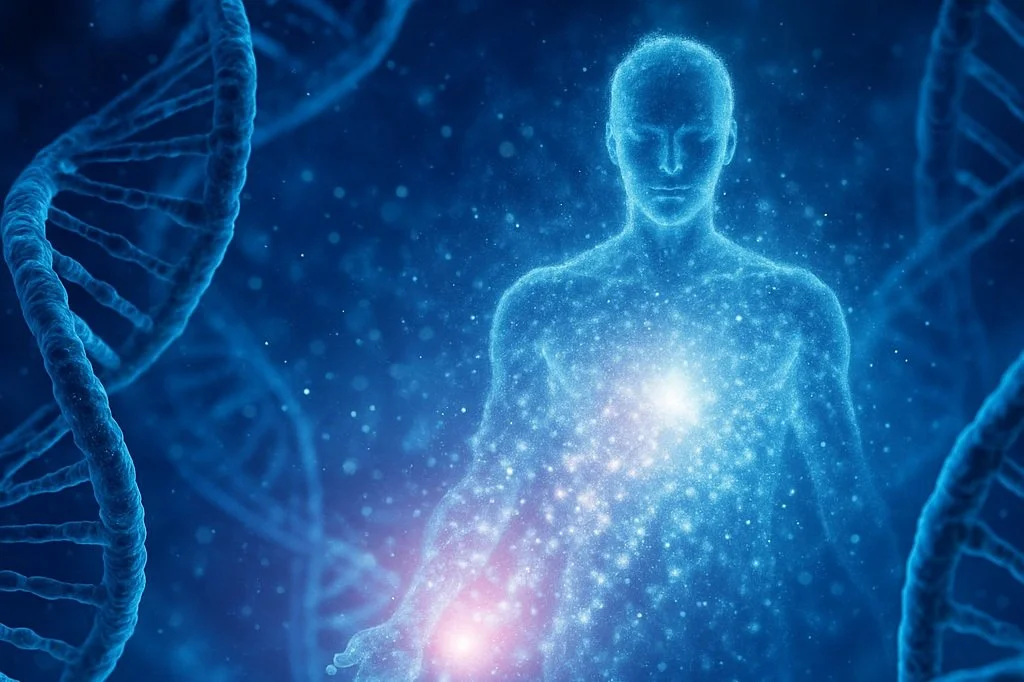The Blueprint for Life, Reimagined
In the history of science, few breakthroughs have been as transformative—and as ethically charged—as the splitting of the atom. It gave us nuclear energy and the bomb. The internet connected the world and spawned a misinformation epidemic. Now, a new frontier looms that could redefine human biology itself: synthetic genomics.
For decades, scientists have been piecing together artificial versions of viruses, bacteria, and even yeast. But now, for the first time, researchers in the United Kingdom are turning their sights to a far more ambitious target: the human genome.
This isn’t gene editing. It’s not CRISPR. It’s not tweaking a few faulty sequences to treat a disease. What researchers with the Synthetic Human Genome Project (SynHG) propose is far more audacious: to rebuild the human genome from scratch—one chemical letter at a time.
A Bold New Project seeks to rewrite Human Life from Scratch.
Launched with support from the Wellcome Trust—the world’s largest medical research charity and a founding backer of the original Human Genome Project—the SynHG initiative unites scientists from Cambridge, Kent, Manchester, Oxford, and Imperial College London. Over the next five years, their goal is to develop the tools and frameworks needed to construct an entirely synthetic human genome in the lab.
“With recent technological advances, the SynHG project is at the forefront of one of the most exciting areas of scientific research,” said Michael Dunn of Wellcome. “By creating the necessary tools and methods to synthesize a human genome, we will answer questions about health and disease that we cannot even anticipate yet.”
It’s an inspiring vision: a future where we don’t just treat illness—we design health from the ground up. Julian Sale of the Molecular Biology Lab in Cambridge told the BBC that synthetic genomes could improve the healthspan of humans, extending not just how long we live, but how well we live in old age. Imagine repairing tissues before they fail. Replacing worn-out immune systems. Even building resistance to age-related diseases encoded at the genomic level.
This is not science fiction. This is science in motion.
The Power—and the Peril
But with such sweeping power comes inevitable danger.
The same tools that could be used to design better organs or create cells resistant to cancer could just as easily be weaponized. A synthetic genome offers the terrifying potential to engineer highly efficient biological threats—designer viruses, lab-grown pathogens, even tailored genetic attacks.
And that’s why SynHG is more than just a biology experiment. The project will also fund a comprehensive social science program to explore the ethical, legal, and societal impacts of synthetic genomics. What laws must be put in place? Who will own synthetic life? Who decides how far is too far?
“The genie is out of the bottle,” warned Bill Earnshaw, a genetics professor at the University of Edinburgh. “We could have a set of restrictions now, but if an organization who has access to appropriate machinery decided to start synthesizing anything, I don’t think we could stop them.”
A Long Journey—But Already Underway
While building a synthetic human genome might sound like a futuristic dream, the journey has already begun.
Back in 2002, scientists successfully synthesized a viral genome for the first time. In 2008, researchers built a synthetic bacterium. And by 2017, scientists had managed to synthesize a functional yeast genome—representing a major leap in genomic complexity.
Still, the human genome is on an entirely different scale. With over 3 billion base pairs, it’s a staggering digital instruction manual for everything the body is and does. Synthesizing it is not just a technical feat—it’s a philosophical one.
The researchers behind SynHG believe this task could take decades. That timeline offers a narrow window for society to prepare for the consequences of this emerging capability. Will we regulate it with wisdom—or be blindsided by its misuse?
A Moment of Reckoning
The Synthetic Human Genome Project represents one of the most profound turning points in science since the discovery of DNA itself. It is not merely a question of whether we can rewrite the human genome—it’s whether we should, and how we ensure it’s done responsibly.
On one side lies the promise of medicine so advanced it borders on miraculous: organs that never fail, cells that defy cancer, genes that resist aging. On the other, the specter of abuse—genetic surveillance, designer bioweapons, and the loss of boundaries between the natural and the artificial.
This isn’t just about biology. It’s about what it means to be human in the 21st century.
And as we take the first steps into this uncharted territory, one truth echoes louder than ever:
Science does not exist in a vacuum. It exists in the world we make with it.
This article contains AI generated content using information from these sources:
MSN - https://www.msn.com/en-us/news/technology/scientists-are-trying-to-rebuild-humanity-from-raw-genetic-code/ar-AA1HPqvf?ocid=sapphireappshare
Welcome.org - https://wellcome.org/news/researchers-take-first-steps-creating-synthetic-human-genomes
BBC - https://www.bbc.com/news/articles/c6256wpn97ro
